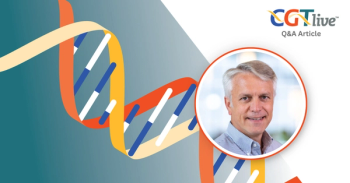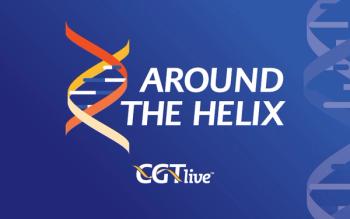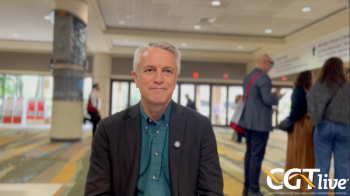
Beam’s Base-Editing HSC Therapy BEAM-101 Raises HbF Levels in Patients With Sickle Cell Disease
Beam Therapeutics’ team provided insight on data the company presented at EHA's 2025 Congress.
At
Experts from Beam Therapeutics, including chief executive officer John Evans, MBA, weighed in on the updated results. They emphasized the durable increases in fetal hemoglobin (HbF) seen in the data and explained how BEAM-101 may differentiate itself from other gene therapy products for SCD.
CGTLive: Can you give some background context about Beam’s EHA presentation?
Beam Therapeutics: This year at the EHA Congress, we presented new data from our BEACON phase 1/2 clinical trial of BEAM-101, an investigational base editing therapy for the treatment of patients with severe SCD with severe vaso-occlusive crises (VOCs). This update builds upon data we shared at the 2024 American Society of Hematology (ASH) meeting, where we demonstrated robust, durable increases in HbF, reductions in sickle hemoglobin (HbS) and improvements in red blood cell health in 7 patients treated with BEAM-101. The new data presented at EHA come from 17 patients and include longer follow-up, further establishing the potential of BEAM-101 in achieving transformative outcomes for patients with severe SCD.
What are some of the key findings Beam is presenting at EHA this year?
The key findings from our updated BEACON trial data are incredibly promising. All 17 patients treated with BEAM-101 achieved significant increases in HbF levels, exceeding 60%, and a reduction in HbS to less than 40%. These results are consistent with what we presented at ASH and are on par with levels seen in individuals with sickle cell trait who are carriers of the disease but typically do not experience symptoms of the disease. Importantly, the therapy also led to rapid neutrophil and platelet engraftment, with a median time to neutrophil engraftment of just 16.5 days. Patients required a median of only 1 mobilization cycle, demonstrating the efficiency of our approach. Finally, we saw improvements in markers of red blood cell health and oxygen delivery, and there were no reports of VOCs post-engraftment. These results underscore the potential for BEAM-101 to significantly improve the quality of life for patients. Additionally, the treatment demonstrated an efficient manufacturing process with high yields, ensuring reliable delivery of BEAM-101 to patients.
How would you summarize the big-picture implications that doctors and the broader healthcare community should take away from these results?
The big-picture takeaway is that BEAM-101 represents a potentially differentiated gene therapy for patients with severe SCD. The durable increases in HbF and reductions in HbS are critical in reducing the significant burden of SCD, including pain crises. The rapid engraftment and low number of mobilization cycles means patients spend less time in the hospital, benefitting the patient, as well as the broader healthcare system. For the all stakeholders, these results reinforce the potential of base editing as a transformative approach to genetic medicine and gene therapies.
What are the next steps for this research? Are there any challenges that still need to be addressed?
The BEACON trial is progressing quickly, with enrollment in both the adolescent and adult cohorts complete. Our next steps for BEAM-101 are focused on continuing to dose patients in the study, with the goal of dosing 30 patients by mid-2025. We plan to share an update on trial results by the end of 2025. Additionally, we are developing next-generation therapies, including our ESCAPE technology, which will enable nongenotoxic conditioning, allowing for a broader patient population to benefit from ex vivo gene editing.
Is there anything else you want to add?
One of our main priorities is advancing BEAM-101 to patients as quickly as possible. We are focused on accelerating the regulatory process and moving toward BLA submission, with every step we take bringing us closer to our ultimate mission of providing life-long cures for those living with severe sickle cell disease.
This transcript has been edited for clarity.
Newsletter
Stay at the forefront of cutting-edge science with CGT—your direct line to expert insights, breakthrough data, and real-time coverage of the latest advancements in cell and gene therapy.



































